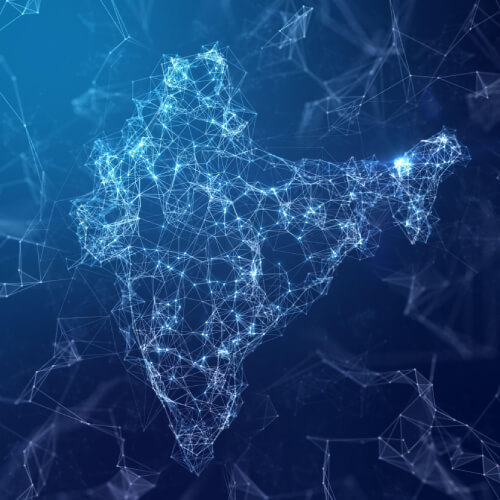
Anyone hoping to make money from building 5G networks this year probably works in India. With rollouts grinding to a halt in parts of the developed world, the huge country of 1.4 billion people has managed to install more than 140,000 basestations since December, according to the latest regulatory data. The main winners have been Ericsson, Nokia and Samsung, the vendors largely responsible for India's 4G infrastructure. But a significant deal appears to have gone to Mavenir.
The American purveyor of open radio access network (RAN) technology has scooped a contract with Bharti Airtel, India's second-biggest operator, to supply 5G products for up to 10,000 sites in rural areas, according to two separate industry sources following an initial report in India's Economic Times newspaper. That report said Mavenir would initially work on 2,500 sites before it potentially scales up.
Figure 1:  Mavenir is hooking up parts of rural India as operators race to build out 5G.
Mavenir is hooking up parts of rural India as operators race to build out 5G.
(Per Bengston/Alamy Stock Photo)
One source described the arrangement as a large commercial trial and said Mavenir would not receive payment until it has shown its open RAN technology meets certain performance criteria. Open RAN allows operators to combine products from different suppliers at the same mobile site, where they would traditionally buy everything from a single big vendor. Operators like the idea – believing open RAN could spur competition, among other things – but they remain wary due to concerns about operational complexity and technological readiness.
What's still unclear is whether Mavenir is providing both radios and software to Airtel or if other suppliers are involved. The company started out in open RAN as a software specialist but has more recently expanded into hardware and systems integration, recently pitching itself as an "end-to-end" supplier. It has raised about $350 million in the last year to support development and fill gaps in its portfolio for brownfield operators. Mavenir representatives confirmed there was a deal with Airtel but had been unable to comment on the size or scope of it at the time of publication.
Brownfield progress
Ten thousand sites would be a small fraction of the Indian total. Regulatory data showed there were 163,878 5G basestations across India by late April. During an interview earlier this month, Mavenir CEO Pardeep Kohli said he expected each of India's big operators – Reliance Jio, Airtel and Vodafone Idea – to have deployed about 400,000 5G basestations by the time rollout is finished.
For a company of Mavenir's size, however, a deal for 10,000 sites would represent quite a substantial win. Last year, the company generated sales of only about $100 million in the RAN market, compared with the roughly $18.7 billion that Ericsson made at its networks division.
"I don't need 15 or 20 customers," Kohli previously told Light Reading. "Even if I have two or three of them, for us to go from $100 million to $500 million is good enough." Rather than attempting to compete against Ericsson and Nokia globally, he is concentrating his efforts on just six markets – the US, the UK, Germany, Japan, Australia and India.
News of the Indian deal comes shortly after Mavenir landed a contract with the UK's Virgin Media O2 (VMO2) to cover some brownfield sites. It was also chosen earlier this year by Germany's Deutsche Telekom to provide massive MIMO technology, an advanced 5G system, across some parts of Europe outside Germany. Neither Mavenir nor the operators have disclosed many details about those respective projects, but they are likely to involve a relatively small number of sites compared with the Airtel contract.
Mavenir's other notable deal is with Dish Network, the US company attempting to build an entirely new mobile network based on open RAN technology. In that case, Mavenir is providing the RAN software that links to radios supplied mainly by Japan's Fujitsu. Dish is under government pressure to reach stringent coverage targets and relying on wholesale arrangements with AT&T and Verizon while it deploys its own sites. But profits and customer numbers have both fallen in the last year.
One source questioned Mavenir's ability to make further inroads at Airtel while the operator relies chiefly on Ericsson, Nokia and Samsung for its lightning-fast rollout. Airtel and Jio are racing to extend 5G across the country and lure customers away from the slower-moving Vodafone Idea, which has yet to activate any 5G services. It is making India's 5G rollout one of the quickest the industry has seen.
Related posts:
— Iain Morris, International Editor, Light Reading
Read more about:
AsiaAbout the Author(s)
You May Also Like










